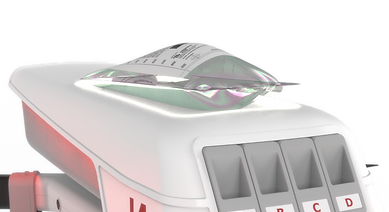The Client


Just a reminder: this is a potential client, not a real one ;)
Main Goals
Reduce the number of severe outcomes caused by snakebites.
Equip nearby medical personnel with the tools needed for effective first response.
Prevent deterioration of the patient’s condition caused by misinformation and improper initial actions.
Overview
Each year, approximately 5.4 million snakebites occur worldwide, resulting in over 1.8 million cases of envenomation and more than 81,000 deaths. The World Health Organization classifies snakebite envenomation as a Neglected Tropical Disease. To address this urgent health challenge, there is a critical need for a solution that ensures rapid delivery of appropriate first-aid treatment to patients in remote and high-risk areas.
Target audience
Buyers
Medical health centers
Users
Poison Control Centers
Medical Forces
Snakebite patients
01. Market Landscape
In our review of existing drone-based solutions on the market—particularly those designed for medical transport—we found that none of the competitors are suitable for delivering anti-venom to patients bitten in the field, due to falling short in one or more of the three key parameters: flight speed, payload capacity, and flight range.

02. Discovery & Definition
Understanding the main key point:
This included a review of relevant literature and interviews with official poison control centers and frontline first aid providers.
Why appropriate anti-venoms are not included in basic first aid kits?
(in areas with a high risk of deadly snakebites)

Short shelf life

Expensive production

Requires cooling
This led us to the conclusion that a dedicated thermal system is essential — one that can preserve the anti-venom’s integrity both during transport to the patient and on the return journey to the medical facility.
Why do we need expert guidance in the field (after a snakebite)?

widespread misinformation

limited local medical expertise
This insight led us to ensure remote professional medical support and remote control as an essential part of delivering optimal care.
Why rapid, long-distance anti-venom delivery is critical?

Requires quick treatment

Few and far manufacturing sites
This insight led us to develop a delivery system able to fly 40 km in 30 minutes, as antivenom sources are often far from the bite site and fast delivery is critical to prevent deterioration.
Product Users
Medic
Operates in the bite site

Professional
Operates remote control & maintenance

Patient
passive user

Scenario
Call Medical Center
Medical team dispatched
Medical force arrives to site
Medic administers dosage
Patient evacuated to hospital
Snake Bite
Drone sent with anti - venom
Drone lands at bite site
Professional releases anti-venom dosage remotely
Drone
sent back
Product Requirements
After identifying the value propositions and key aspects of the product, we moved on to crafting a set of product requirements. This document outlines the product’s core requirements in a clear and measurable way, helping us define the boundaries and direction for the next stages of development.
Cold storage (2-8 ° C)
Operational range: up to 40 KM
Compatible with various landing surface
identifiable as a medical drone
Operates in low-light conditions
As fast as possible - up to 30 min
Continuous location tracking
Remote release control — up to 40 KM
Supports delivery of four anti-venom types
Quick access to the vial — max 20 sec. from release
After establishing the precise product requirements, we explored several product concepts and selected the most suitable and viable one for implementation.




No spoilers, but number 3 is the winner (with some changes of course)

03. Prototypes & User tests
After selecting the leading concept, the focus shifted to the product’s physical form and structure, which was primarily driven by user experience (UX) considerations. Since the product is intended for use in high-stress, outdoor environments, it was essential to define a clear and intuitive usage scenario that minimizes the risk of human error - mistakes that could lead to severe consequences. We’ll highlight several key features and explain the rationale behind their development.

Oh, you thought that was a lot? we had like 20 more before the final one! Trial and error is my middle name!

04. Final Product Concept
We did it!
All of the hard work led to this one stunning product — packed with insights, innovation, and everything it was built to deliver

Main features:


No matter how smart the drone is, the key factor is still its speed in reaching the bite location.
After researching drones capable of covering 40 km in under 30 minutes, we identified the DJI Matrice 300 RTK — a drone that can carry up to 11.8 kg and reach speeds of up to 82 km/h.
We used it as the base platform for our drone’s structure.
To ensure accurate treatment under pressure and with limited information, a remote expert determines the type and dose of anti-venom based on field data — including snake type, symptoms, and vital signs. The on-site medical team simply collects the anti-venom from the opened drawer and administers it via IV.


Understanding that treatment takes place in field conditions, we designed the top of the drone to function as a small “work surface” for the medical team — allowing them to conveniently inject the anti-venom into the IV.
05. What I learned
-
Understanding real pain points often requires more than just speaking to a few users or relying on intuition — it demands in-depth research that reveals insights you could never fully grasp firsthand.
-
A clear and detailed specification is essential before starting the design phase; without it, every change in components may force a complete redesign.
-
Strong visual and color design is not just aesthetic - it's a critical part of UX, helping to clarify the intended use and guide the user effectively.
Thanks for reviewing this project!
Check out more projects before you go

